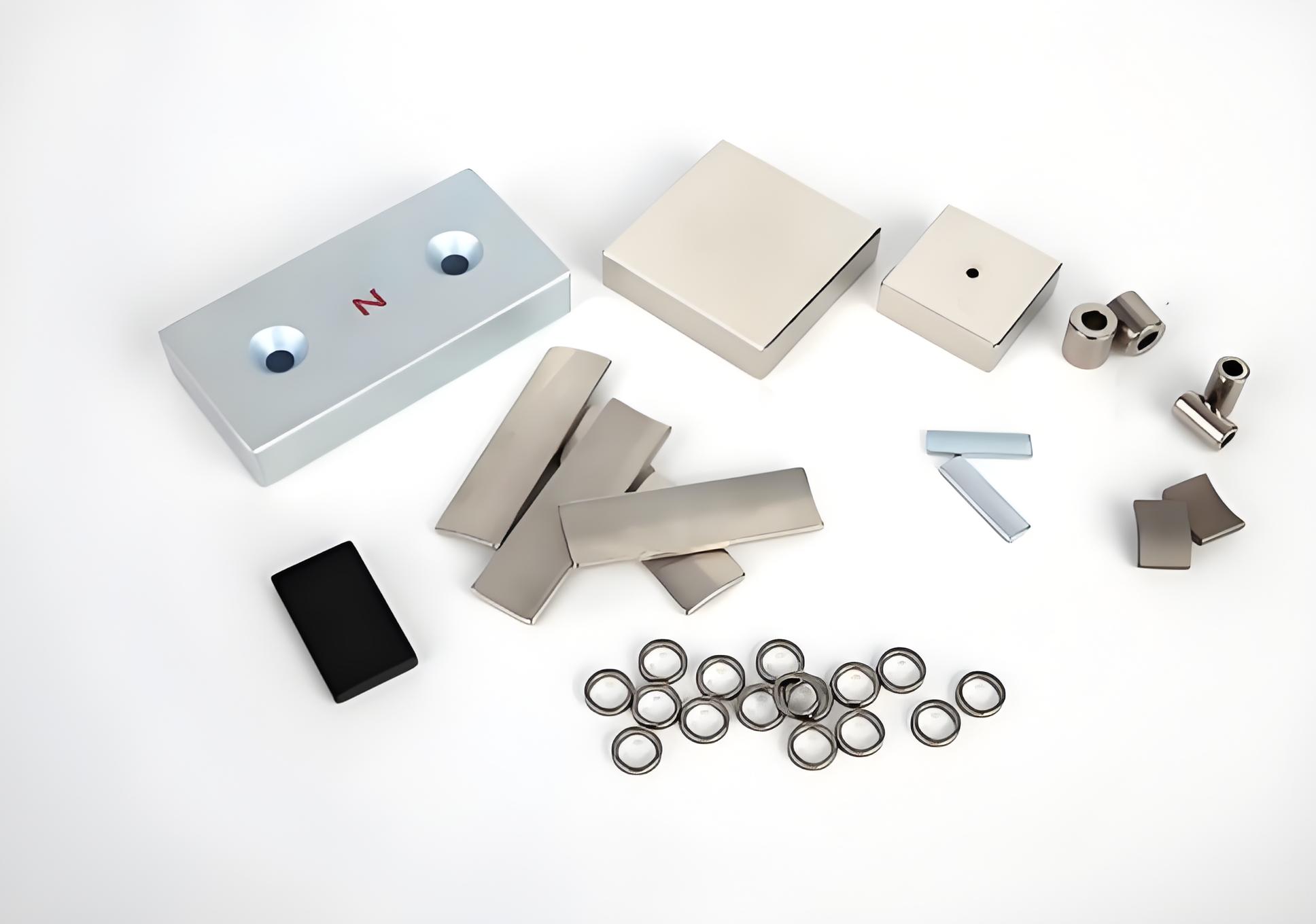
One stop solution for magnetic products

Magnets are essential in daily life and industrial manufacturing. From simple magnetic buttons to complex motors, magnets are widely used. However, for most people, choosing the right magnet can be a daunting task because it involves various factors, including the type, size, shape, and magnetic force of the magnet. The following is a comprehensive recommendation for the selection of permanent magnet materials based on application scenarios, which is classified and guided by combining material properties and key control factors:
1. Matching the core elements of selection
Application environment temperature
>200℃ high temperature environment: Samarium cobalt (temperature resistance of 350℃) or aluminum nickel cobalt is preferred
150-200℃ medium and high temperature: NdFeB UH/SH series is selected (heat dissipation design is required)
<80℃ conventional environment: ferrite has the best cost performance (cost reduction of more than 50%)
Load strength requirements
High dynamic load (such as motor rotor): Samarium cobalt (excellent impact resistance) or reinforced NdFeB coating + buffer structure design
Static load (such as a magnetic device): Ferrite (thickness increased by 20% to compensate for the disadvantage of magnetic energy product)
Corrosion resistance requirements
Chemical/marine environment: Samarium cobalt (self-corrosion resistance) or NdFeB nickel coating (thickness ≥8μm)
Ordinary humid environment: Ferrite (surface treatment-free) or epoxy resin-coated NdFeB
2.Cost-oriented selection
3. Special scenario optimization solution
High-frequency applications (such as wireless charging)
Preferably use ferrite (eddy current loss <3W/kg) or block NdFeB (silicone potting isolation)
Precision instruments (such as medical equipment)
Choose low-hysteresis samarium cobalt material (magnetic field fluctuation <0.1%) + magnetic shielding shell
Extremely long life requirements (>30 years)
NdFeB double-sided nickel coating (12μm) + vacuum potting packaging, with working temperature ≤80℃
4. Selection and verification process
Prototype test
Conduct a 72-hour high-temperature aging test (temperature gradient 110% rated value)
Salt spray test ≥96 hours to verify the effectiveness of the coating
Life prediction
Use the Arrhenius model to calculate the temperature acceleration attenuation coefficient
Magnetic flux monitoring cycle recommendation: every 6 months for industrial applications, every 2 years for civilian products
5. Recommended Typical Scenarios
Notes:
Avoid using the magnetic energy product (BHmax) as the only selection indicator. It is necessary to comprehensively evaluate parameters such as the temperature coefficient (αBr) and coercive force (Hcj);
For batch applications, it is recommended to first perform 2000 magnetic cycle tests to verify stability.
Specially shaped magnets (such as arc-shaped and multi-pole magnetization) require an additional 20% safety margin;
Through systematic parameter matching and verification testing, the performance advantages of various permanent magnetic materials can be maximized.
It is very important to choose reputable brands and suppliers. They can not only provide high-quality products, but also provide after-sales service and technical support. Good suppliers and brands can help you choose the right magnet.
The price of a magnet depends on its type, size, shape, and quantity. First of all, you need to consider the usage scenario and budget, and weigh them with other factors to find the strongest magnet that suits you best.
It is not difficult to choose a suitable strong magnet. As long as you understand the above content, you can find a satisfactory product according to your needs.
If you need to select and purchase permanent magnetic materials, you can contact us at any time. Our company will provide you with professional consulting services related to permanent magnetic materials!
Contact number: +8618419064914
Contact email: cocoslm2024@gmail.com
Company website: https://www.slmmagnet.com/
Search
Categories List
Please give us a message

Beijing Saint Langma Magnetic Technology Co.,Ltd